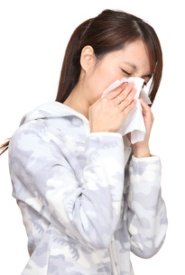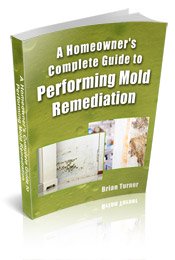Find a Mold Specialist Now
Click or Call, Toll-Free 24/7
Toxic Mold Symptoms
It’s of the utmost importance that you learn to identify basic toxic mold symptoms so that you can properly protect yourself and your loved ones from lasting consequences. Although symptoms of toxic mold can vary from person to person, they do tend to follow the same bare-bones pattern that it’s important to learn to recognize.
How does toxic mold harm the body?
Once the mold spores have taken root and begun to flourish, they quickly begin to deteriorate the surface of whatever they’re growing on in order to continue the nourishment process. This is exactly why patches of the mold are most likely to be found on biodegradable surfaces such as cardboard, fabric or wood that has become dampened thanks to water seepage or high humidity levels.
This deterioration process produces airborne by-products called volatile organic compounds (VOCs) and they are very toxic to the human body. Toxic mold symptoms result when the VOCs attack the respiratory system and central nervous system. The consequences of this situation can range from mild, hay fever-like irritation of the body’s mucous membranes to serious, permanent brain damage or nervous system deterioration. If you suspect that you may have a toxic mold problem in your home, monitor yourself and your family members closely for the following symptoms of toxic mold poisoning.
Common Toxic Mold Symptoms
- One of the first and most common symptoms of toxic mold poisoning is the development of respiratory issues. Labored breathing, asthma, cough, irritation of the sinuses or mucous membranes in the nose and throat, or pulmonary bleeding are all common. These would be especially worrisome if you are not someone who typically suffers from allergies or asthma-like symptoms.
- Also watch for toxic mold symptoms that hint at problems with the nervous system. They are less common, but signal the presence of critical problems. Headaches, dizziness, memory loss or a loss of concentration all hint at something being seriously wrong.
- Sooner or later, a toxic mold infestation can even cause damage to other body systems as well. Pain in the liver or other organs, fertility problems, unexplained lethargy, nausea, urinary tract infections, and other otherwise unexplained health issues can all be symptoms of toxic mold poisoning and require immediate intervention.
If one or more family members or residents of a particular home experience these same symptoms at the same time or symptoms appear to temporarily get better upon leaving the house, it’s even more likely that a toxic mold has invaded your home and begun to make it unlivable. It’s important not to wait to deal with the issue at hand. These are very clear signs that serious (and possibly permanent) damage is being done to your system.

What do I do if I feel I or my family members exhibit toxic mold symptoms
Get the affected person in to see a doctor as soon as possible and convey your concerns. The doctor can then evaluate the patient for symptoms of toxic mold and advise you on how to proceed. You really can’t be too careful with your health and it always pays to ask a professional when matters as important as one’s health are concerned.
This is also the case when it comes to your home. You should conduct a thorough, but cautious check of your home for signs of mold. If you have reason to believe you’ve found evidence of an infestation, it is possible to deal with the problem yourself. However, it is highly advisable that you call in a professional mold specialist to evaluate the situation as well.
Reputable mold detection and removal specialists will come in and evaluate your home for free so that you know beyond the shadow of any doubt where you stand. Plus, should you decide you’d prefer to deal with the problem yourself, the specialist can advise you on safe, effective ways to do this. Safety is important when we’re talking about something as toxic as mold.
You can follow this link to get a list of Qualified Mold Removal Specialists in your area.
You can follow this link to read more about what mold is, how to know if you have a mold problem, and a list of the common mold exposure symptoms.
Return From Toxic Mold Symptoms To Our Symptoms Of Toxic Mold Exposure Page
Black Mold Health Symptoms Home Page





